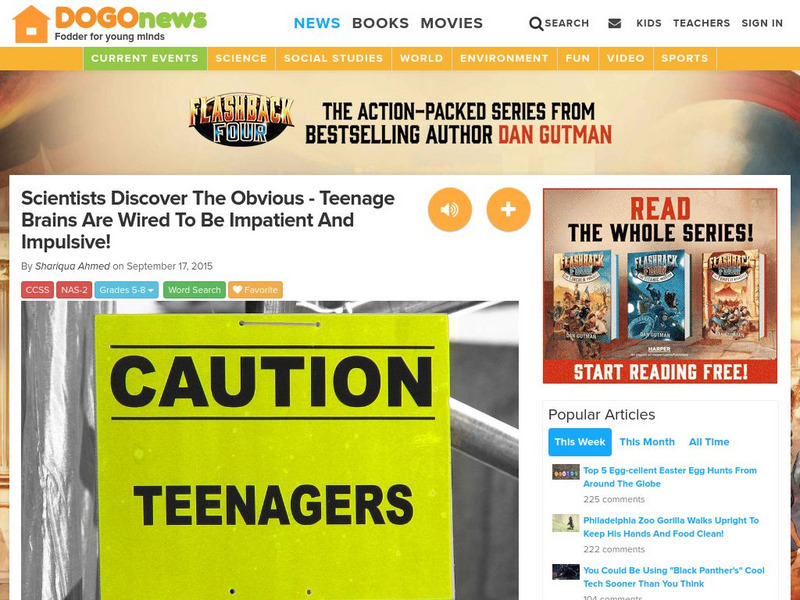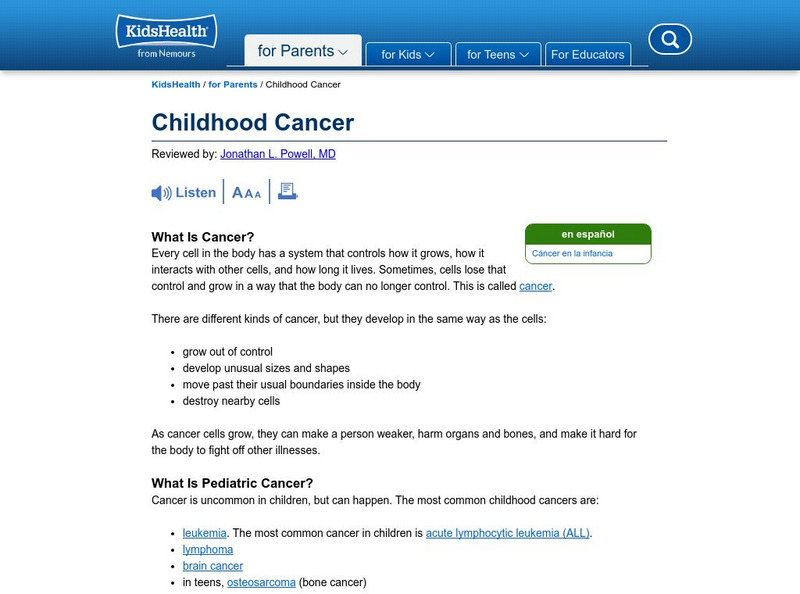Curated OER
Be Brain Smart
Students examine the function of the brain. Using the internet, they research facts of the brains of vertebrates. Using clay, they make three sculptures of brains of different vertebrates and use crayola colors to color it. To end the...
Curated OER
The Mind-Body Connection
Second graders learn about the human body. In this biology lesson plan, 2nd graders will begin with the basics of understanding charts and graphs and progress into units that cover the body systems, and mental and emotional health....
Curated OER
Whose Brain is THAT?!
Students explore various animal brains. In this animal anatomy lesson, students compare and contrast animal brains with the brain of a human. They record several characteristics in a data table for each brain they observe.
Curated OER
Brain Cells
In this brain cells activity, students learn about neurons. Students read about the different types of neurons and their life span. Students also study the neuron diagram and glial cells.
DOGO Media
Dogo News: Teenage Brains Wired to Be Impatient and Impulsive
Article reports on new research that helps explain the functioning of the teenage brain, and how it differs from that of an adult.
PBS
Pbs Teachers, Nova: Little People of Flores: Compare the Brains
Compare and contrast the shape and size of a Homo floresiensis brain with the brain of a chimp and a modern human.
PBS
Pbs Teachers: Scientific American: Make Up Your Mind: Mind Mapping
Investigate the pseudoscience of phrenology and its attempt to organize and assign different purposes to different parts of the brain. Create a phrenology chart on a bathing cap and compare it to modern understanding of brain function...
Curated OER
Kids Health: Childhood Cancer
This article gives information about childhood cancer and its most common cause, genetic mutation. Treatment information is also included.









